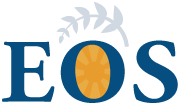Summary
Media outlets should take steps to provide access to marginalized groups. This may include the consideration of transmitting in minority languages and assuring broad coverage of rural areas.
Election Parts
Quotes
- Taking positive measures to narrow the information gap between the rural and urban areas by increasing the coverage of the mass media, whether private, public or community based, (e.) Encouragement of the use of indigenous languages in the mass media as vehicles of promoting local, national, and regional inter-communication, (f.) Ensuring the media are adequately sensitized on gender issues so as to promote gender equality and equity in information dissemination.
- Community broadcasting shall be promoted given its potential to broaden access by poor and rural communities to the airwaves.
- Efforts should be made to increase the scope of the print media, particularly to rural communities.
- Freedom of expression imposes an obligation on the authorities to take positive measures to promote diversity, which include among other things-: pluralistic access to the media and other means of communication, including by vulnerable or marginalised groups, such as women, children and refugees, as well as linguistic and cultural groups.
- States should make particular efforts, taking advantage of technological developments, to ensure that the broadest possible diversity of media content, including general interest content, is accessible to all groups in society, particularly those which may have specific needs or face disadvantage or obstacles when accessing media content, such as minority groups, refugees, children, the elderly and persons with cognitive or physical disabilities. This implies that such media content should be made available in different languages and in suitable formats and that it should be easy to find and use.
- Public service media should be subject to constant public scrutiny and be accountable and transparent when performing their functions as they have the obligation to serve the public in all its diversity, including minority communities that would not be served in a purely commercial market. Public service media must also take into account the gender equality perspective in terms of both content and staff.
- Providing support, whether of a financial or regulatory nature, for media outlets or media content, for example in certain formats or languages, that serve the information and voice needs of different individuals and groups.
- Calls upon all States: (m) To facilitate equal participation in, access to, and use of, information and communications technology such as the Internet, applying a gender perspective.
- Promoting diversity should be a primary goal of broadcast regulation; diversity implies gender equity within broadcasting, as well as equal opportunity for all sections of society to access the airwaves.
- Key concerns are: Do minority parties/candidates have reasonable and fair access to media? Are media available in the language(s) of national minorities? Do minorities in outlying areas have sufficient access to media?
- A domestic observer group can assess whether the information is provided on time, is accurate, excludes any group of eligible citizens, and is delivered in a way most likely to ensure the highest level of participation. This can be done by: Including the issue in media-monitoring activities (see Chapter 9); Checking the content, quantity, and distribution of information published by the authorities, such as leaflets and posters; and Checking whether information produced by the authorities is available in “minority” languages (if the concern is that minorities have been excluded).
- With these broad principles in mind, the Special Rapporteur wishes to emphasize that in pre-election periods…( h) Print and Broadcast media make available reports and programmes that will reach the largest number of voters possible, including in minority languages and for those who may have been traditionally excluded from the political process, such as ethnic or religious minorities, women and indigenous groups.



